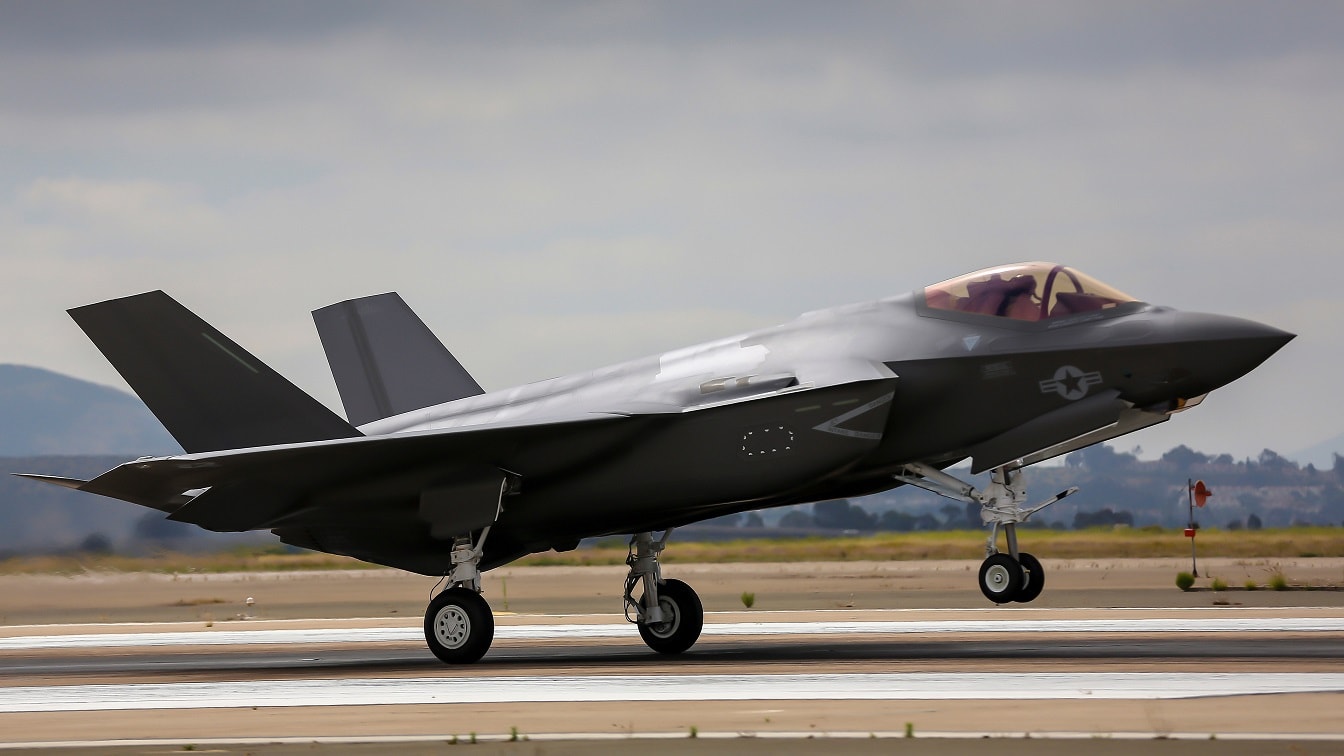Race to Recover the US Navy’s F-35C That Crashed in the South China Sea: Losing a Lockheed Martin F-35C is never “good,” but the fact that one is now resting on the bottom of the South China Sea is about as bad as it could possibly get for the United States Navy, which remains the sole operator of the highly advanced fifth-generation stealth aircraft. One of the Navy’s single-engine combat fighter jet experienced a “landing mishap” on the deck of the aircraft carrier USS Carl Vinson (CVN-70) while conducting routine flight operations, and crashed into the sea.
“The pilot safely ejected from the aircraft and was recovered via U.S. military helicopter. The pilot is in stable condition. There were seven total Sailors injured; three Sailors required MEDEVAC to a medical treatment facility in Manila, Philippines, and four were treated by on-board medical personnel. All three MEDEVACs are assessed as stable. Of the four Sailors treated by on-board medical, three have been released. Additional details and the cause of the inflight mishap is under investigation,” the U.S. Navy announced via a statement.
Damage to the carrier was reportedly only superficial, and it and the carrier’s air wing have resumed normal operations.
F-35C Show of Force Gone Bad
The USS Carl Vinson Carrier Strike Group (CSG-1) was operating in the highly contested waters along with the USS Abraham Lincoln Carrier Strike Group (CSG-3), Carrier Air Wings 9 and two, as well as the USS America and USS Essex Amphibious Ready Groups and a Japanese Maritime Self Defense Force helicopter destroyer, which is also essentially a small aircraft carrier. The joint flotilla was the latest show of force to maintain freedom of navigation in the face of increased Chinese aggression.
The U.S. Navy may now be in a race with the People’s Liberation Army Navy (PLAN) to recover the F-35C from the ocean floor. Such recovery efforts are also never “easy,” but now the U.S. military must do so in some of the most contested waters on the planet.
“The U.S. Navy is making recovery operations arrangements for the F-35C aircraft involved in the mishap aboard USS Carl Vinson (CVN 70) in the South China Sea Jan. 24.,” said Brenda Way, a spokesperson for the Navy’s Pacific Fleet.
The U.S. Navy has not revealed where in the South China Sea the crash occurred, but currently Beijing claims nearly the entire 1.3 million square mile (3.3 million square kilometer) waterway as its sovereign territory and has bolstered its claims by building up and militarizing reefs and islands in the region. In addition, Chinese naval and coast guard vessels maintain a constant presence in the South China Sea waters.
There has been no official comment from Beijing, but the Chinese military could certainly be expected to begin its own recovery efforts of the fighter, which is far more advanced that an aircraft currently operated by China.
“China will try to locate and survey it thoroughly using submarines and one of its deep diving submersibles,” Carl Schuster, a former director of operations at the US Pacific Command’s Joint Intelligence Center in Hawaii, told CNN.
Schuster, who is a former US Navy captain, added that it is even possible that China could make a claim for the salvage rights based on its territorial claims in the South China Sea.
“Salvaging the plane with commercial and coast guard assets will enable Beijing to claim it is recovering a potential environmental hazard or foreign military equipment from its territorial waters,” Schuster warned.
The U.S. Navy has not disclosed the depth of the waters where the F-35 crash occurred, but in the past the U.S. Navy has recovered aircraft from some extremely deep waters. A 2019 salvage operation in the Philippine Sea successfully recovered a crashed C-2A Greyhound that had been three miles under the surface.
Unfortunately, this isn’t the first time an F-35 has needed to be recovered from the sea floor. Late last year, the U.S. Navy aided the British Royal Navy in recovering an F-35B fighter from the waters of the Mediterranean after it had crashed during takeoff from the flagship aircraft carrier HMS Queen Elizabeth.
It is unlikely that the U.S. Navy will waste any time in its efforts to locate and recover the F-35C.
Peter Suciu, a Forbes Magzine Contributing Writer, is a Michigan-based journalist who has contributed to more than four dozen magazines, newspapers and websites. He regularly writes about military small arms, and is the author of several books on military headgear including A Gallery of Military Headdress, which is available on Amazon.com.

